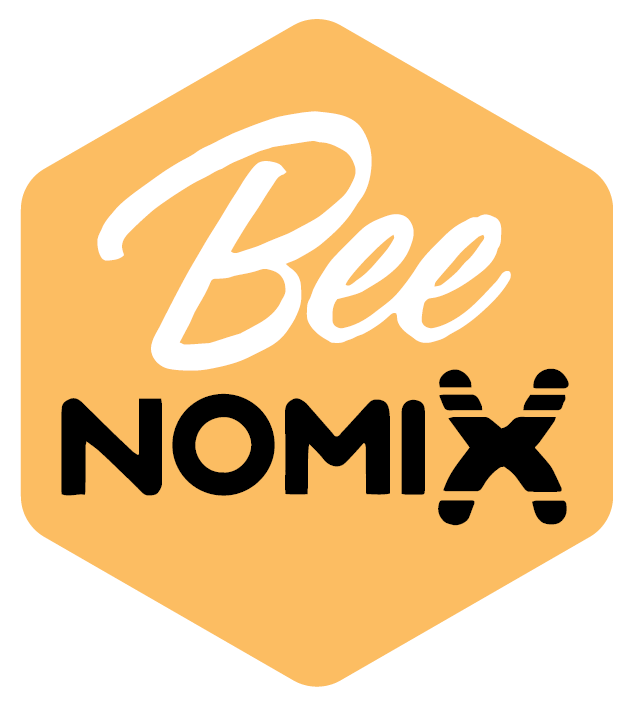See the Objectives of the BEENOMIX project.
See the Objectives of the BEENOMIX project.
See the detailed section and download the pdfs below for more information about the BEENOMIX project
See the detailed section and download the pdfs below for more information about the BEENOMIX project
The project is based on an innovative selective approach for beekeeping, promoting a survey of phenotypes in a standardized and repeatable manner, targeted use of Natural Fertilization in isolated stations and Instrumental Insemination, within a precise selective scheme.
Data collected in the field from operators, associated with a complete master file, are processed by the scientific team for proper identification of female (Queens producing Queen) and male (Drones producing Queen) breeders. The development of BLUP genetic indices based on phenotype and genealogy allows identification of the genetic merit of each individual hive.
The Operations Group works to intensify two behavioral traits that induce substantial mitigation of the impact on hives of ongoing climate change: extending the duration of winter diapause and a balanced and sustainable relationship between the size of the bee population and the amount of brood they raise.
Genomic sampling and analysis on the Beenomix population allowed for the study of variability at the Sed Determination Locus (SDL) to determine the risk potential for increased inbreeding within the population. In fact, the increased incidence of homozygosity leads to a decline in brood viability.
Through genomic analysis on SNP markers, the Operations Group has developed a diagnostic tool capable of identifying whether a bee belongs to specific genetic types (breeds or sub-species). This analysis also allows a clear and specific characterization of the selected Beenomix population, which does not fully overlap with any of the mapped sub-species.
GO efforts are currently focused on the development of genetic resistance traits to Varroa, to which a special experimental operating protocol is dedicated. The operational approach is based on the use of Instrumental Insemination with the seed of a single drone (Single Drone Insemination) and artificial and controlled infestation of Varroa to allow precise measurement of the expression of behavioral traits of resistance to the pest.
Genetics developed under the project are being made available free of charge to all Lombardy beekeepers who join the Area of Mating (ADA) implemented in Val Bodengo. In an isolated alpine valley, virgin queens brought by adherents can be fertilized naturally by drones selected by GO Beenomix.

BLUP 2020 generic assessment
BLUP 2020 generic assessment
An important goal of the Beenomix 2.0 project was achieved as early as March 2020, despite the ongoing pandemic, by generating genetic indexes based on phenotypes collected in the previous 2019 season. In addition to phenotypic data, all the kinship relationships acquired since the previous Beenomix project entered the genetic evaluation. The master file used had this structure
A total of 1056 individuals of whom 1038 were mother-provided and 796 were father-provided. The distribution of data by year was as follows. Recall that the departing selective scheme operates annually on 108 colonies.
Based on the kinship matrix, the working group (Stefano Biffani, Giulio Pagnacco, and Maria Grazia De Iorio) calculated BLUP – ST indices for the entire archive from 2015 onward. Altogether there were 394 data points per kg of honey, 246 for docility and 235 for hygienic behavior. Genetic indices are called EBV(Estimated Breeding Value).
The model, the classical German model, includes: general mean, environmental effects of the year, apiary and the interaction between these two. Then come the genetic effects of the female workers in a certain family (direct effect on production) and the queen leading that family (maternal effect), as well as the effect of error. The index of a certain colony is given by the sum of the direct and maternal effect of that colony.
The indices for the three characters were then weighted into a single aggregate index called IMEL in which the weights given to the three characters reflect the following selective emphases:
1 for the kilograms of honey
0.8 for docility (HB)
0.4 for hygienic behavior
Because the aggregate index does not have its own defined unit of measurement, IMEL was rescaled using the variability of kg of honey that is certainly more familiar to beekeepers.
Below are correlations between indices and between them and the original phenotypes.
The correlations are all positive (a very advantageous fact), and thus by selecting for one of the characters the others follow it favorably. Indexes and corresponding phenotypes correlate very well as expected.
Correlations between indexes are not true genetic correlations, but they approximate them.
From the ranking of colonies measured in 2019, those from which to make the necessary translocations (2020) to constitute the new population under selection were identified. Specifically, the maternal grandmother from whom to raise future DPQs and the mothers of the 108 queens whose colonies will be evaluated in 2021 were identified.
The genetic evaluations performed were made by preliminarily obtaining estimates of the variances of the random components of the model (VQ,VW andVE) in addition to the covariance between Q and W (CovQ,W).




